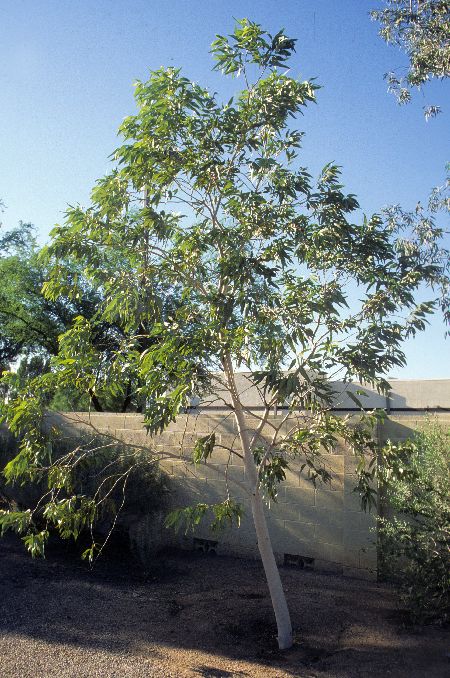
Eucalyptus papuana
Ghost Gum, Blue Ghost Eucalyptus
Ghost Gum is accepting of wind and tough growing conditions. Handsome form, but most striking feature is its smooth, white bark. Canopy coverage: 707 square feet.
[Read More]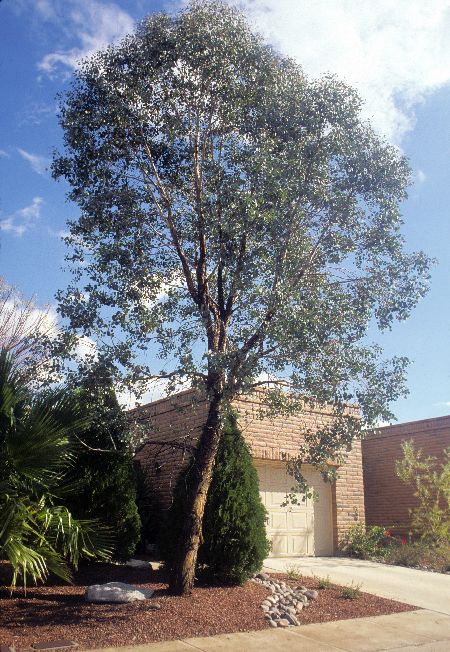
Eucalyptus polyanthemos
Silver Dollar Gum
The common name of Silver Dollar Gum is due to the shape of its juvenile (young) leaves. Leaves eventually elongate to look more like the typical Eucalyptus foliage but only after a number of years. Makes a nice screen or windbreak. Best with some protection from the sun in hot summer regions. Canopy coverage: 491 square feet.
[Read More]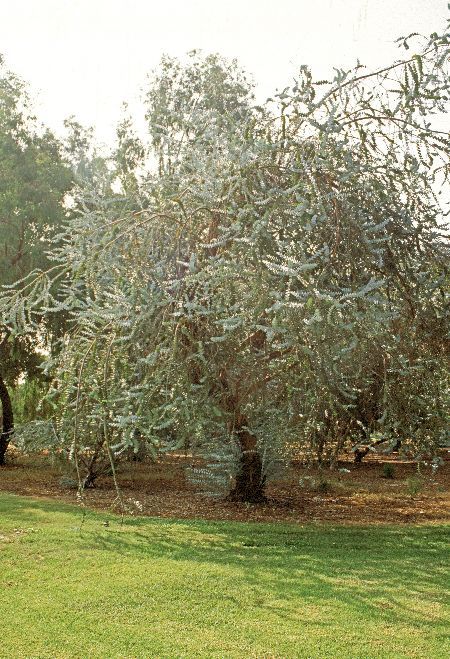
Eucalyptus pulverulenta
Silver Mountain Gum
The unusual positioning of rounded, silver-dollar shaped leaves along stiff stems of this Eucalyptus, plus its unique silvery color, make this plant's appearance unique. It is useful in floral arrangements, and produces an eye-catching statement in the landscape. Canopy coverage: 177 square feet.
[Read More]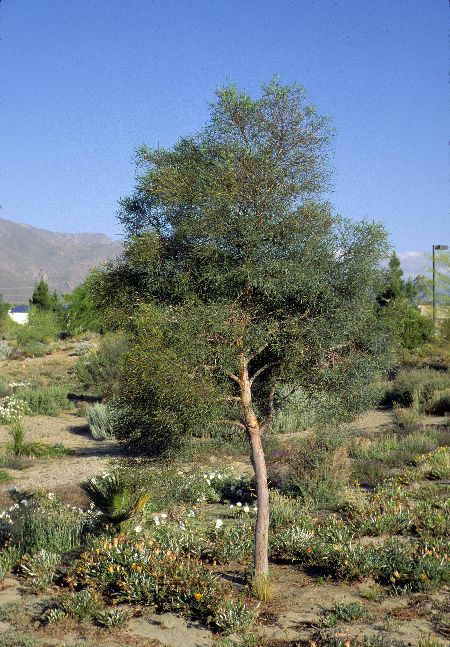
Eucalyptus spathulata
Swamp Mallee
The leaves of Swamp Mallee are atypical compared to other Eucalyptus. They are long, slender and ribbonlike to 2 to 3 inches long. The smooth, reddish peeling bark of its trunk and branches also offer interest. Makes a nice evergreen screen, blending well with desert plants. Canopy coverage: 707 square feet.
[Read More]
Eysenhardtia orthocarpa
Kidneywood
Kidneywood can be grown as a shrub or small tree. Works well as a screen in a naturalistic setting. Canopy coverage: 79 square feet.
[Read More]Ficus carica
Fig Tree
Fig plants can be maintained at about any size and even work well as shrubby trees. If damaged by cold, they often regrow to take on a shrub form. Check locally for varieties best-suited to your region. Canopy coverage: 314 square feet.
[Read More]Forestiera neomexicana
Desert Olive
Train Desert Olive as a small tree or shrub. Appealing features include the light gray bark, which contrasts nicely with its bright green leaves. Attractive yellow fall color. Canopy coverage: 50 square feet.
[Read More]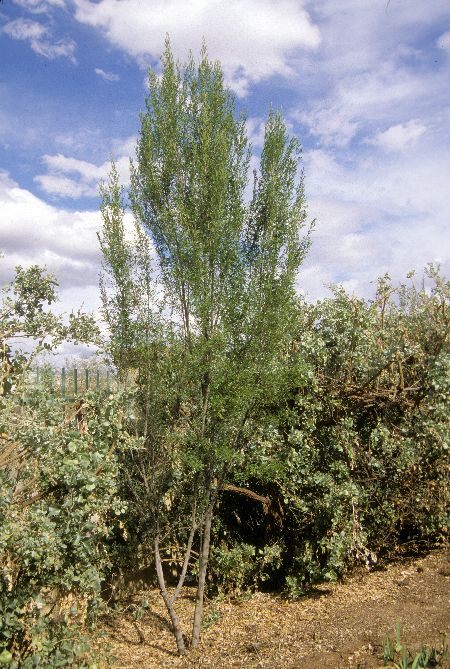
Fraxinus greggii
Littleleaf Ash
Littleleaf Ash can be grown as a small tree or shrub. Graceful rounded form. Canopy coverage: 50 square feet.
[Read More]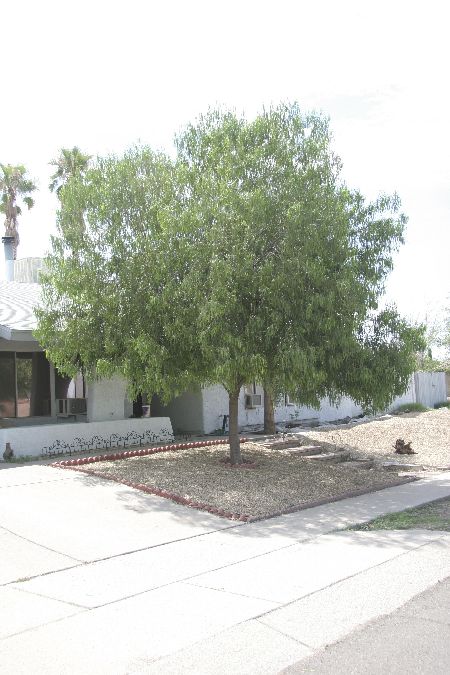
Geijera parviflora
Australian Willow
This is a graceful small tree for yard or patio. Weeping form is reminiscent of weeping willow. Canopy coverage: 314 square feet.
[Read More]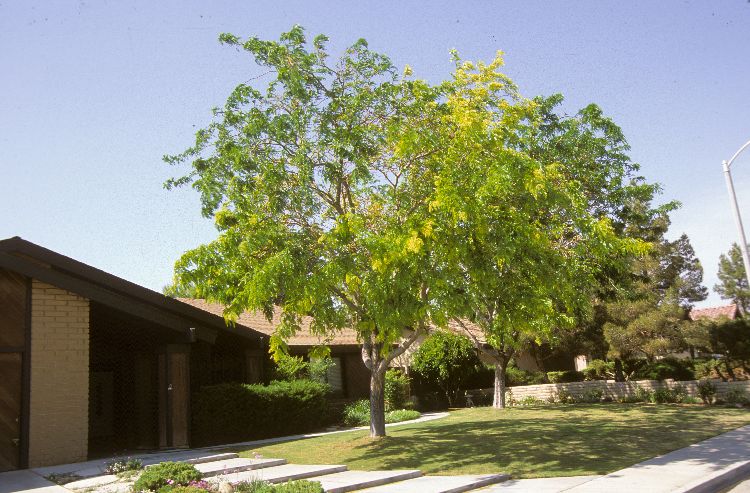
Gleditsia triacanthos inermis
Honey Locust
Upright spreading form helps make this a quality shade tree. Golden yellow fall color. 'Shade Master' is a popular selection. Canopy coverage: 962 square feet.
[Read More]
Havardia mexicana
Mexican Ebony
A handsome tree that requires some space to grow. Typical mature size is in the range of 30 feet high by 20 feet wide, but they can get much larger with regular moisture and optimum conditions. Branches have small thorns. Canopy coverage: 707 square feet.
[Read More]Havardia pallens
Tenaza, Ape's Earring
Tenaza grows as an upright tree with long, straight branches. Thorny when young, mature trees produce few to zero thorns. Fragrant flowers bloom in clusters. Leaves are leaflets that look similar to those of Acacia or Mesquite, creating dappled shade. Canopy coverage: 314 square feet.
[Read More]Hibiscus syriacus
Rose of Sharon
When in bloom, Rose of Sharon reminds one of hollyhocks. It can be pruned to suit the needs of the landscape, from small tree to large, natural shrub or screen. Flowers are mostly shades of pink. Leaves have a coarse texture. Best with some protection from the sun in hot summer regions. Canopy coverage: 28 square feet.
[Read More]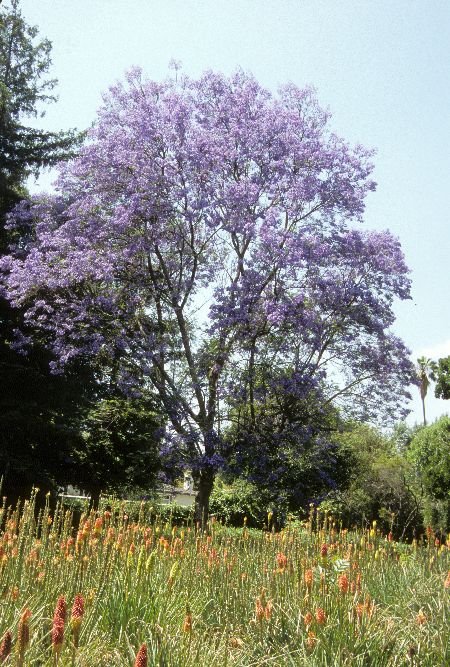
Jacaranda mimosifolia
Jacaranda
A large-scale tree most often planted in parks and commercial sites due to its size. Evokes a pleasing subtropical effect with late spring to early summer show of brilliant lavender-blue flowers. Canopy coverage: 707 square feet.
[Read More]Juniperus osteosperma
Utah Juniper
Utah juniper can be trained as a tree or large shrub. Despite its common name, it is the most common juniper in Arizona. Accepts dry rocky soils. Canopy coverage: 314 square feet.
[Read More]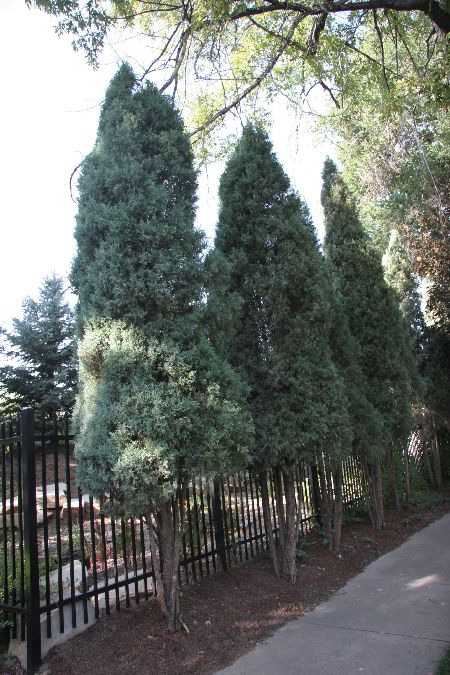
Juniperus scopulorum
Rocky Mountain Juniper
Many different selections of Rocky Mountain Juniper are available, with variable forms, textures and foliage color. Look for 'Skyrocket', blue-green foliage; 'Gray Gleam', blue-gray foliage, 'Blue Haven', deep blue-gray foliage; and 'Tolleson's Blue Weeping', drooping form with blue-gray leaves. Canopy coverage: 314 square feet.
[Read More]Juniperus virginiana cupressifolia
Hillspire Juniper
Grows in a symmetrical tree with a pyramidal form. Extremely cold hardy. Blue berries appear on female plants. Accepts a wide range of soils. Sometimes sold under the name 'Hillspire'. Canopy coverage: 177 square feet.
[Read More]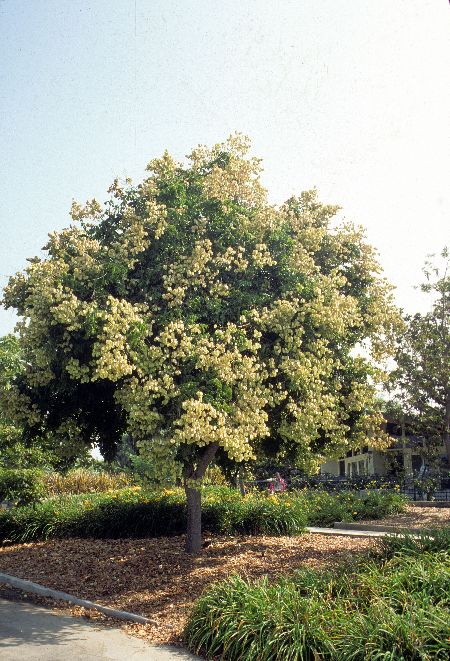
Koelreuteria paniculata
Goldenrain Tree
The open, branching form of Goldenrain Tree produces light shade. Papery fruit capsules emerge red then turn brown. Best with some protection from the sun in hot summer regions. Canopy coverage: 962 square feet.
[Read More]Lagerstroemia indica
Crape Myrtle
Crape Myrtle can be successfully grown as a tree or shrub. It offers interest all year—flowers summer into to fall, fall color, and interesting sculptural branches during winter after leaves fall. Canopy coverage: 314 square feet.
[Read More]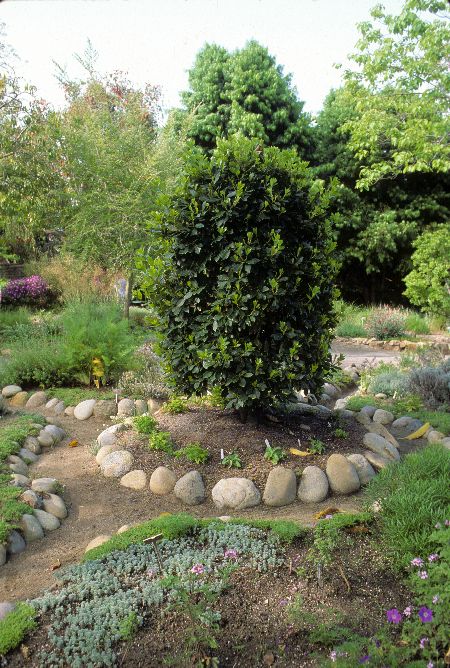
Laurus nobilis
Bay Laurel, Sweet Bay
The leaf of this plant is the classic bay leaf used in cooking. It can be grown as a tree or shrub. Adapts well to container culture, helpful when below-freezing temperatures are forecast. Simply move plants to a protected location. Canopy coverage: 707 square feet.
[Read More]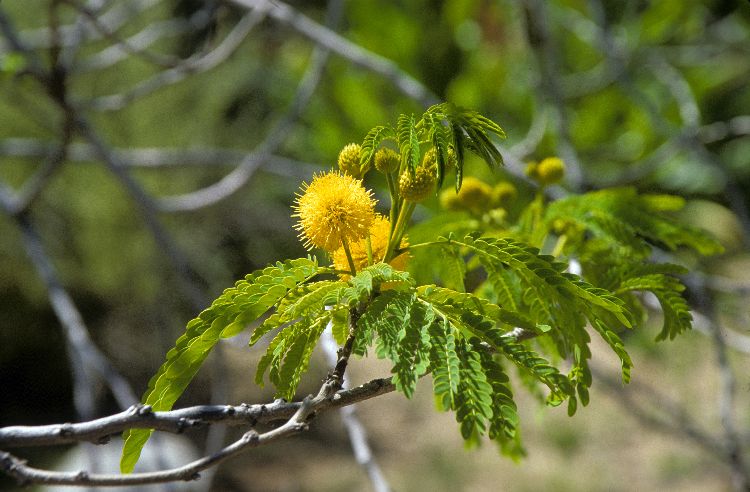
Leucaena retusa
Golden Leadball Tree
Yellow-gold, ball-shaped flowers about 1 inch in diameter hang from branches. The delicate, lacy leaves help provide a subtropical effect. Accepts some shade. Canopy coverage: 177 square feet.
[Read More]